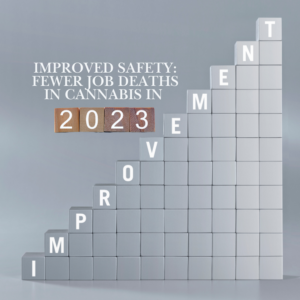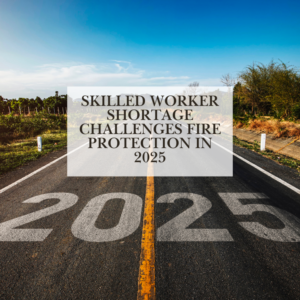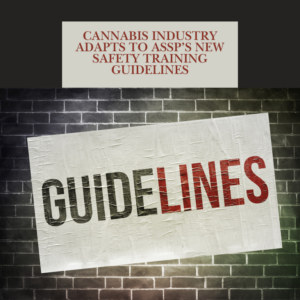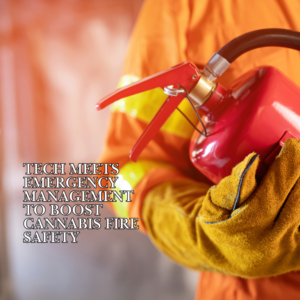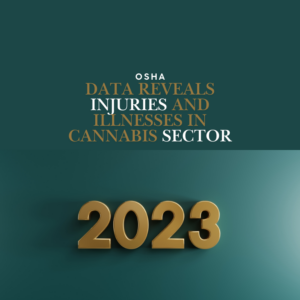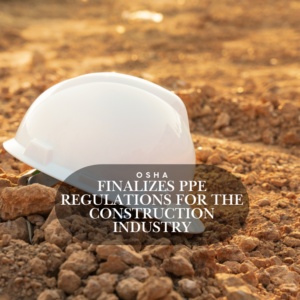2024’s Top 20 OSHA Safety Violations Every Workplace Should Know

Workplace safety is critical for both employers and employees, ensuring a safe environment that minimizes the risk of accidents, injuries, and fatalities. Every year, the Occupational Safety and Health Administration (OSHA) identifies the most common violations that occur in various industries. These violations highlight areas where workplaces frequently fall short in maintaining safety standards. By understanding and addressing these issues, organizations can enhance their safety culture and avoid costly penalties.
Here are the top 20 OSHA safety violations in 2024 that every workplace should be aware of:
1. Fall Protection (General Requirements) – 29 CFR 1926.501
Falls are one of the leading causes of workplace fatalities, especially in the construction industry. This violation refers to the failure to provide adequate fall protection systems such as guardrails, safety nets, or personal fall arrest systems for employees working at heights of six feet or more. Employers must ensure that workers are safeguarded against fall hazards in all work environments.
2. Hazard Communication – 29 CFR 1910.1200
Effective communication about hazardous chemicals is critical to prevent workplace injuries and illnesses. This violation occurs when employers fail to inform and train workers about the chemicals they may be exposed to. Proper labeling, Safety Data Sheets (SDS), and employee training are required to ensure that workers understand the dangers of hazardous substances and know how to handle them safely.
3. Respiratory Protection – 29 CFR 1910.134
Respiratory hazards can lead to serious health issues, such as lung diseases and respiratory infections. This violation occurs when employers do not provide appropriate respiratory protection for workers exposed to harmful dust, fumes, or chemicals. Workplaces must assess air quality and provide respirators, fit testing, and training to employees when needed.
4. Ladders – 29 CFR 1926.1053
Ladders are commonly used in many industries, but improper use can lead to falls and injuries. This violation occurs when ladders are not inspected regularly, are used incorrectly, or are placed on unstable surfaces. Employers must ensure that ladders meet safety standards and that employees are trained on their correct usage.
5. Scaffolding – 29 CFR 1926.451
Scaffolding-related accidents often result in severe injuries or fatalities. This violation happens when scaffolding systems are improperly erected, insufficiently supported, or lack guardrails. Employers must ensure that scaffolds are designed, inspected, and used correctly to prevent collapses and worker falls.
6. Lockout/Tagout (Control of Hazardous Energy) – 29 CFR 1910.147
Lockout/tagout procedures prevent the accidental release of hazardous energy (such as electrical, mechanical, or hydraulic energy) during maintenance or repair tasks. Violations in this area involve inadequate procedures or failure to properly implement lockout/tagout, which can lead to serious injuries. Employers must train workers on how to isolate energy sources and follow lockout/tagout protocols.
7. Powered Industrial Trucks (Forklifts) – 29 CFR 1910.178
Forklifts and other powered industrial trucks are widely used in warehouses and construction sites. This violation occurs when workers are not properly trained to operate these vehicles, or when trucks are used in unsafe conditions. Employers must ensure that operators are certified and that vehicles are maintained according to OSHA standards.
8. Fall Protection (Training Requirements) – 29 CFR 1926.503
Fall protection training is essential to prevent accidents. This violation occurs when employers fail to provide adequate training to employees working at heights. Workers must understand how to use fall protection equipment correctly and recognize potential fall hazards in their work environment.
9. Machine Guarding – 29 CFR 1910.212
Machines with moving parts can cause serious injuries if not properly guarded. This violation refers to the absence or inadequate use of guards on machinery, exposing workers to risks like cuts, amputations, and crushing injuries. Employers must ensure that machinery is equipped with appropriate guards to protect workers from dangerous moving parts.
10. Eye and Face Protection – 29 CFR 1926.102
Eye and face injuries are common in industries where workers are exposed to flying particles, chemicals, or other hazards. This violation occurs when employers fail to provide adequate protective gear such as safety glasses or face shields. Ensuring that workers wear proper protection can prevent serious eye injuries and blindness.
11. Electrical (Wiring Methods) – 29 CFR 1910.305
Improper wiring methods, such as exposed wires, overloaded circuits, or poorly maintained electrical systems, can lead to fires and electrical shocks. This violation occurs when electrical installations do not meet OSHA standards. Regular inspections and maintenance of electrical systems are crucial to prevent accidents.
12. Personal Protective Equipment (PPE) – 29 CFR 1910.132
Employers are required to assess workplace hazards and provide the appropriate personal protective equipment (PPE) for employees. This violation occurs when PPE is not provided, not used correctly, or not maintained properly. Common PPE includes gloves, helmets, ear protection, and protective clothing, all of which are essential for worker safety.
13. Electrical (General Requirements) – 29 CFR 1910.303
Electrical hazards are a leading cause of workplace injuries. This violation involves the failure to ensure that electrical systems are installed and maintained in accordance with safety standards. Regular inspections and adherence to electrical safety protocols are critical to preventing accidents and ensuring a safe workplace.
14. Control of Hazardous Substances – 29 CFR 1910.1000
Exposure to hazardous substances, such as chemicals and toxic materials, can cause severe health issues. This violation occurs when employers fail to monitor air quality, provide proper ventilation, or implement control measures to limit worker exposure. Proper handling, storage, and disposal of hazardous materials are essential to ensure worker safety.
15. Exit Routes and Emergency Planning – 29 CFR 1910.37
Clear exit routes and effective emergency plans are crucial for workplace safety. This violation occurs when exit routes are blocked, poorly marked, or inadequately maintained. Employers must ensure that exit routes are accessible and that employees are trained on emergency evacuation procedures.
16. Hand and Power Tools – 29 CFR 1926.300
Hand and power tools are essential in many industries, but improper use or maintenance can lead to accidents. This violation involves using defective tools, failing to provide proper training, or not following safety procedures. Employers must ensure that tools are in good condition and that workers are trained to use them safely.
17. Ventilation – 29 CFR 1910.94
Proper ventilation is critical in industries where workers are exposed to harmful dust, fumes, or vapors. This violation occurs when workplaces do not provide adequate ventilation systems to protect workers from inhaling hazardous substances. Employers must ensure that ventilation systems are regularly inspected and maintained.
18. Guardrails – 29 CFR 1926.502
Guardrails are necessary to prevent falls in elevated work areas. This violation occurs when guardrails are missing, improperly installed, or damaged. Employers must ensure that guardrails are in place and meet OSHA standards to protect workers from fall hazards.
19. Flammable and Combustible Liquids – 29 CFR 1910.106
Improper handling and storage of flammable and combustible liquids can result in fires and explosions. This violation involves failing to follow OSHA standards for storing and using these materials. Employers must provide proper storage containers, train workers on handling procedures, and ensure safe work practices around these hazardous materials.
20. Hearing Protection – 29 CFR 1910.95
Prolonged exposure to high noise levels can lead to permanent hearing loss. This violation occurs when employers fail to provide hearing protection or monitor noise levels. Workplaces must implement noise control measures and provide hearing protection devices to employees exposed to hazardous noise levels.
Understanding and addressing these top OSHA violations is crucial for maintaining a safe and compliant workplace. Employers should regularly assess their safety practices, provide proper training, and ensure that all necessary equipment and procedures are in place to protect workers. By staying informed and proactive, organizations can minimize risks, improve worker safety, and avoid costly penalties.






